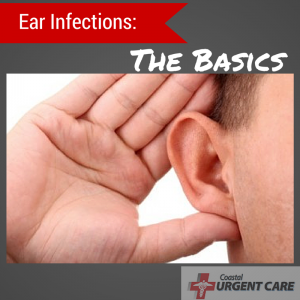 Although the number of ear infections has decreased in the last decade, they still send about 16 million kids to the doctor each year. Kids under age 2 are particularly vulnerable to ear infections because their immune system is still developing and their eustachian tubes (the passageway that drains fluid from the middle ear to the back of the throat) are more narrow and horizontal.
Although the number of ear infections has decreased in the last decade, they still send about 16 million kids to the doctor each year. Kids under age 2 are particularly vulnerable to ear infections because their immune system is still developing and their eustachian tubes (the passageway that drains fluid from the middle ear to the back of the throat) are more narrow and horizontal.
When a cold or allergy is present, these tiny tubes can swell and air is absorbed by the lining of the middle ear, creating a partial vacuum. The fluid can get trapped behind the eardrum and create a breeding ground for viruses or bacteria in a child’s throat and ears. When this happens, an infection is underway.
Types of Ear Infections:
There are three main types of ear infections. Each type has a different combination of symptoms.
- Acute otitis media – The most common ear infection. Parts of the middle ear are infected and swollen and fluid is trapped behind the eardrum. Symptoms Include:
- crying
- irritability
- sleeplessness
- pulling on the ears
- ear pain
- headache
- neck pain
- a feeling of fullness in the ear
- fluid drainage from the ear
- fever
- Otitis media with effusion – This can happen after the initial ear infection if fluid is still trapped behind the ear. A child with OME may have no symptoms, but a doctor will be able to see the fluid behind the eardrum with a special instrument. Some slight and often unnoticed symptoms include:
- Muffled hearing
- Tugging on the ear
- Feeling that fluid is in the ear
- Chronic otitis media with effusion – This happens when fluid remains in the middle ear for a long time or returns over and over again with no signs of infection. This type of ear infection can affect hearing and slow the immune system. Symptoms include:
- Underwater feeling in ear
- Ear tugging
- Trouble swallowing
- Sleeplessness
Treatment for Ear Infections:
An ear infection is often caused by a virus, in which case the only relief doctors can offer is treatment of the symptoms. To ease the pain of an ear infection, your local Coastal Urgent Care doctor may recommend a pain reliever, typically acetaminophen or ibuprofen, which also helps reduce a fever. Aspirin should be avoided in children because of the threat of Reye’s syndrome. Pain can also be reduced by using gentle heat from a heating pad, but be very careful when using heating pads with children.
Sometimes, it is difficult for your doctor to tell with an otoscope alone if the ear infection is caused by a virus or bacteria, so deciding on a proper course of treatment isn’t always easy. Many doctors will prescribe an antibiotic, such as amoxicillin, to be safe against bacteria growing out of control.
Do not treat infections at home without consulting a doctor unless you are absolutely sure of exactly what type of infection you are dealing with, and the proper course of action for treatment.
After visiting Coastal Urgent Care, your child should start feeling better within a few days. If it’s been several days and your child still seems sick, call your doctor. Your child might need a different antibiotic. Once the infection clears, fluid may still remain in the middle ear but usually disappears within three to six weeks.
